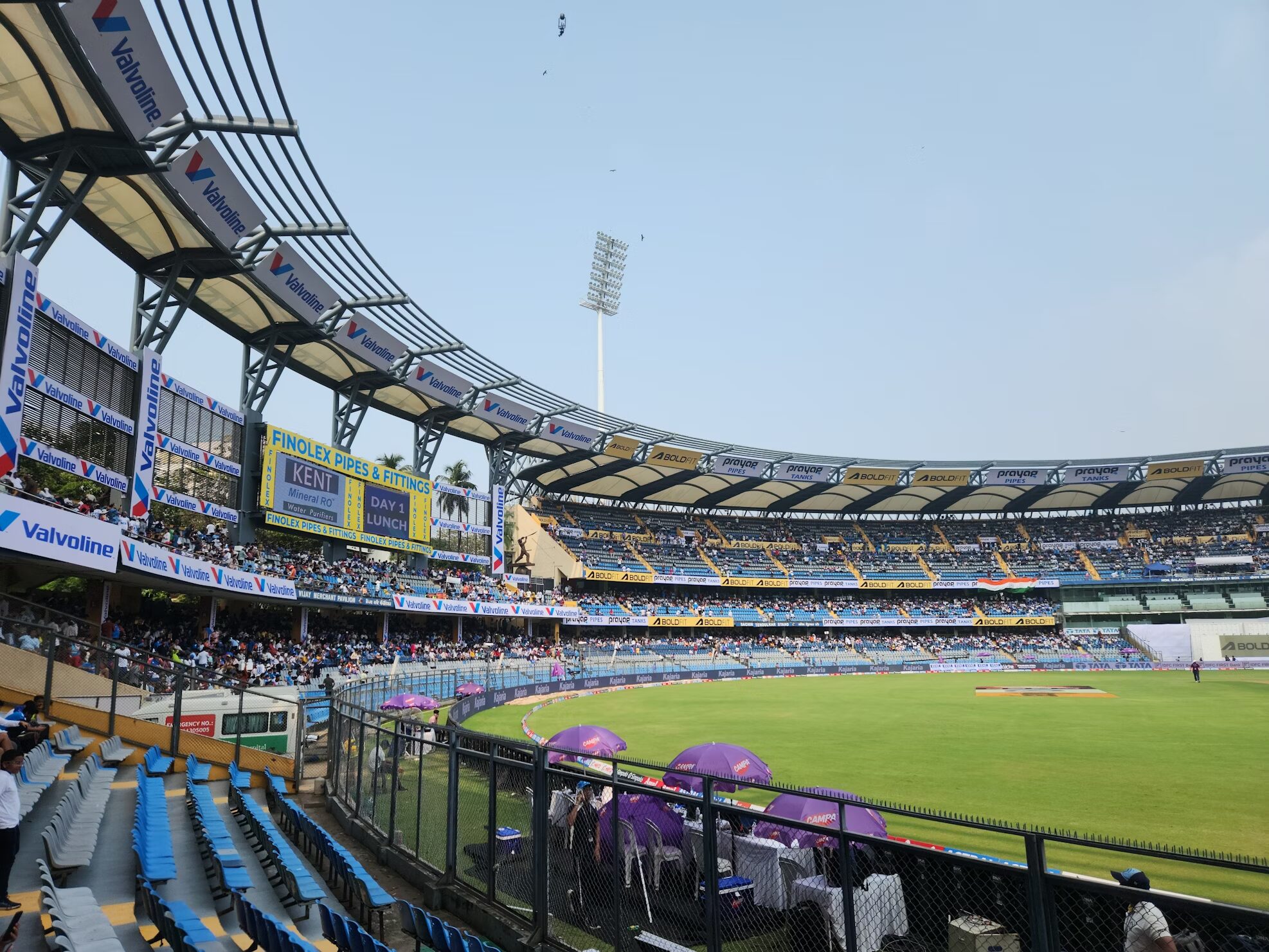Smart Stadiums: Boosting Fan Experience & Sustainability
Smart Stadiums: Enhancing Fan Experience and Promoting Sustainability in Sports
Smart stadiums are changing the way fans enjoy sports and how places operate. These facilities blend modern technology with sustainability initiatives on all levels, allowing impeccable experiences while being efficient. From connections without breaks to power-saving designs, smart stadiums are leading the future of sports rendezvous. Through the lens of smart stadiums, it is interesting to look at fan engagement and sustainability in practice. In this article, we aim to achieve that. Let us take a deeper look at this.
Smart Stadiums and Their Role in Modern Sports
Smart stadiums use technology in order to provide fans with a connected and enjoyable experience without any interruptions. They use IoT devices, real-time data analytics, and advanced communication networks to make the surroundings more interactive. Fans are now able to make food orders right from their seats, gain access to advanced live game stats, and even move around the venue with the assistance of augmented reality (AR) applications.
Intelligent arenas are also significant in terms of green concepts. A lot of these venues are built using sustainable construction materials and harnessing green energies. For example, the Mercedes-Benz Stadium in Atlanta uses 4,000 solar panels to produce renewable energy, which contributes to 10% of the stadium’s energy needs. It proves that smart stadiums can satisfy the fans while being considerate of nature at the same time. And just like smart stadiums change the way fans interact with a game, betting melbet سایت does 10 times more. It allows you to not only view the game from your seat or your screen but also gets you ingrained in the heart of every single play, every goal, and every event. You are not merely watching the game. You are in the middle of it, casting votes on every single move. Each match becomes a heart-pumping event waiting to happen. Why be just a spectator when you can be part of the match? So, take your bet, believe in your own incredible instincts, and make the world of immaculate possibilities turn into your personal achievement!

Key Technologies Powering Smart Stadiums
In order to achieve smart stadiums’ objectives, different technologies must be implemented. Here are four key technologies.
- IoT Sensors: Used to observe and operate the business activities of a stadium. Example: Sensors monitor the size of the crowds in the stadium to ensure that maximum security is provided and minimal congestion occurs.
- Augmented Reality (AR): Elevates the experience of the fans by providing interactive components. Example: By simply aiming the phone towards the field, fans can access player statistics via AR apps.
- Artificial Intelligence (AI): Powers customized recommendations and metrics for predictive maintenance. Example: An AI-driven application can analyze the fanbase’s preference and can recommend specific merchandise or favorite food.
- 5G Connectivity: Provides high-speed internet access for real-time engagement. Example: Supporters at Wembley Stadium are able to use the 5G network to access up-to-date information, stats, and replays of the game in real-time.
They all work in a symbiosis to enable an intelligent, more captivating stadium atmosphere. But the excitement of sports transcends the borders of the stadium. Facebook MelBet is your portal to the world of sports, as it brings you the latest news, updates, and funny sports memes. Fans can interact, keep up with the news, and enjoy the dynamic feel of the game at the same time through one properly arranged feed.
Enhancing Fan Engagement Through Real-Time Connectivity
At smart stadiums, real-time connectivity heightens the level of connectivity, giving fans a blend of immersive and interactive fun as they experience an event with the use of high-speed Wi-Fi and 5G networks. This enhanced form of connectivity helps fans share moments and stay updated with the latest content.
For instance, in the Allianz Arena in Munich, fans are provided access to live game statistics through their smartphones, which further enhances their understanding of the game. Moreover, in stadiums like AT&T Stadium located in Texas, fans are encouraged to vote on the song selection for the breaks in the game using mobile applications, which helps nurture a community aspect.
Sustainable Practices in Smart Stadium Design
Smart stadiums have a keen focus on sustainable development. These are some of the latest practices:
| Sustainability Feature | Example | Impact |
| Rainwater Harvesting | Tottenham Hotspur Stadium collects rainwater. | Reduces water usage by 40%. |
| Solar Panel Installations | Levi’s Stadium generates renewable energy. | Covers game-day electricity needs. |
| Biodegradable Materials | Biodegradable cups used at Amsterdam ArenA. | Cuts single-use plastic waste by 70%. |
| Green Roofs | Barclays Center features a rooftop garden. | Improves insulation and reduces urban heat. |
| Waste Management Systems | Mercedes-Benz Stadium recycles 95% of waste. | Minimizes landfill contributions. |
Not only do these methods reduce the impact on the environment, but they can also serve as a good example for sustainable sports venues across the globe.
Energy Management and Renewable Solutions in Smart Sports Venues
Out of all priorities, smart stadiums aim to use renewable resources in an attempt to be energy efficient. Sophisticated systems are also put in place to monitor and optimize power efficiency so that no resources are wasted. For example, the Amsterdam ArenA uses a battery storage system powered by solar energy, which stores energy to be used during peak hours, and it functions on recycled car batteries. In a similar manner, the Allianz Arena uses LED lighting, which cuts down energy usage by 60% in comparison to traditional lighting systems. Such innovations have a marked impact in reducing operational overhead while aiding in sustainability.
Another energy solution of paramount importance is renewable energy. A hybrid energy-efficient solar panel-cooled system is used by the National Stadium of Singapore, which helps lower energy use by 20%. This type of solution helps demonstrate how technology can encourage environmental welfare in sports facilities.
Waste Reduction and Recycling Initiatives in Smart Stadiums
Waste management is a big issue for things that are big in scale, but smart stadiums are coming up with ways to solve this problem. Initiatives like these are of great interest:
- Composting Stations: Organic waste is transformed into fertilizer. An example of composting is food waste put in place by Wembley Stadium, which lowers landfill waste by 30%.
- Smart Trash Bins: IoT-enabled bins send out signals to indicate when they need emptying. For example, Yankee Stadium has smart bins, which increase the effectiveness of waste collection.
- Recycling Initiatives: Recyclables are sorted out at the source. Take, for example, the Tokyo 2020 Olympics, where over 60% of the waste generated during events was recycled.
- Digital Tickets: No more printing paper tickets. For instance, over 90 percent of the tickets sold at Levi’s Stadium are digital, benefitting from the reduction in paper usage.
This is how smart stadiums are dealing with the problems associated with waste management and tackling environmental cleanliness.

Data Analytics for Optimizing Stadium Operations and Fan Safety
Analytics is central to managing a smart stadium appropriately. Using data from different systems and performing analysis offers stadium managers optimal power over the facility and reinforces fan protection.
As an example, at MetLife Stadium, IoT sensors are used to track the movements of the crowd so that congestion is avoided and evacuation time is improved by 25%. Predictive analytics has also assisted with spotting maintenance problems before their severity increases, saving time and costs. Aside from this, facial recognition technology can improve security by spotting threats in real-time, making sure every visitor is safe.
The Future of Smart Stadiums: Blending Innovation with Sustainability
The potential for smart stadiums is boundless. These venues are changing the way we consider fan experience and integrating tech with fully sustainable elements. Imagine a completely carbon-free stadium powered by renewable energy. Further innovations like AI-powered engagement through VR and self-managed waste products create a smarter version of a stadium. These venues don’t just represent a new chapter in sports but a new standard for the world as a whole. Let us embrace this profound change as one!








